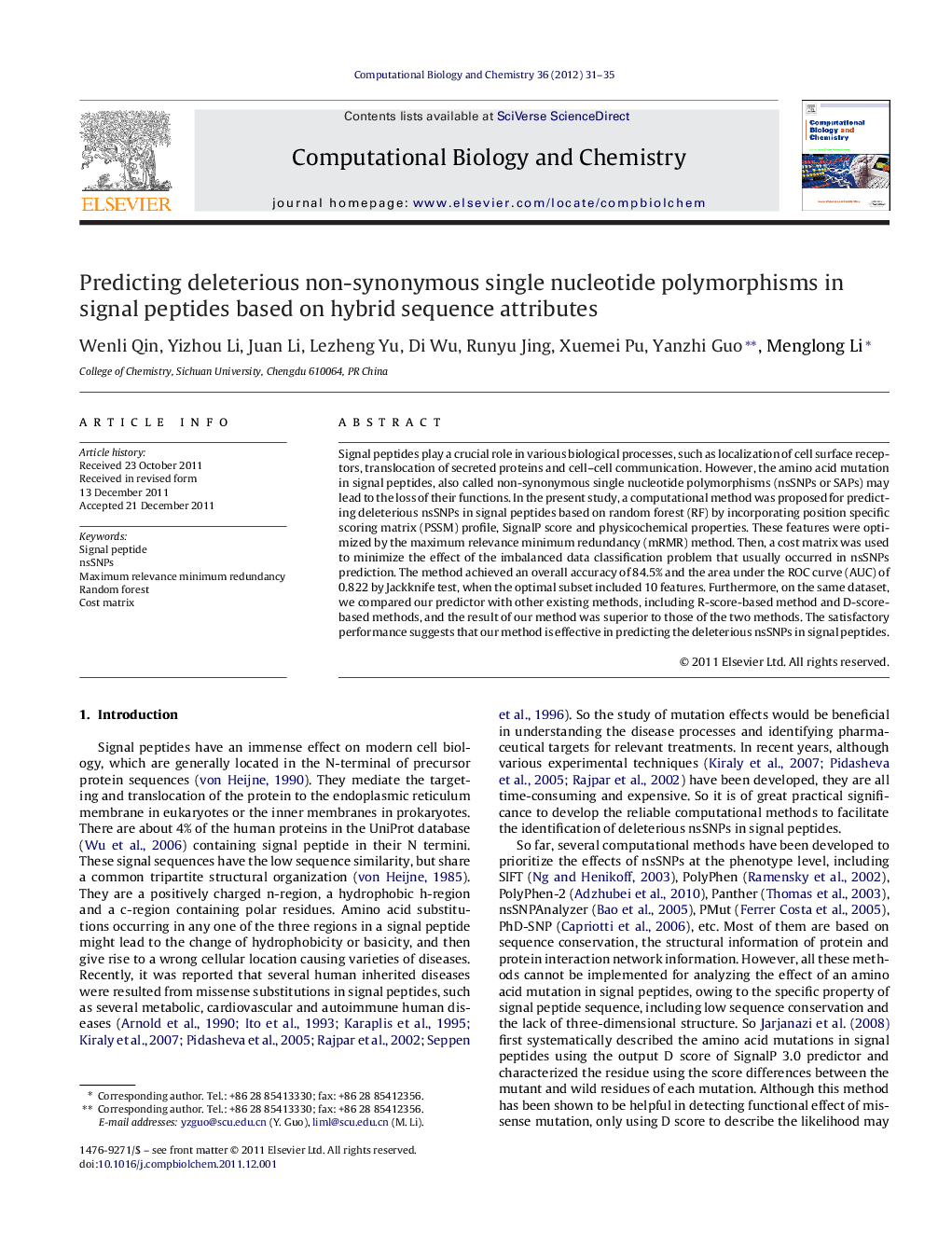| Article ID | Journal | Published Year | Pages | File Type |
|---|---|---|---|---|
| 15206 | Computational Biology and Chemistry | 2012 | 5 Pages |
Signal peptides play a crucial role in various biological processes, such as localization of cell surface receptors, translocation of secreted proteins and cell–cell communication. However, the amino acid mutation in signal peptides, also called non-synonymous single nucleotide polymorphisms (nsSNPs or SAPs) may lead to the loss of their functions. In the present study, a computational method was proposed for predicting deleterious nsSNPs in signal peptides based on random forest (RF) by incorporating position specific scoring matrix (PSSM) profile, SignalP score and physicochemical properties. These features were optimized by the maximum relevance minimum redundancy (mRMR) method. Then, a cost matrix was used to minimize the effect of the imbalanced data classification problem that usually occurred in nsSNPs prediction. The method achieved an overall accuracy of 84.5% and the area under the ROC curve (AUC) of 0.822 by Jackknife test, when the optimal subset included 10 features. Furthermore, on the same dataset, we compared our predictor with other existing methods, including R-score-based method and D-score-based methods, and the result of our method was superior to those of the two methods. The satisfactory performance suggests that our method is effective in predicting the deleterious nsSNPs in signal peptides.
Graphical abstractThe entire flow chart for the prediction of deleterious nsSNPs in signal peptides. The protein sequence is converted into a feature vector that includes information from the PSSM profile, SignalP score and physicochemical properties. A feature selection method was applied to pick up the optimal feature subset. The optimal feature subset was fed in the random forest classifier and obtained the prediction results.Figure optionsDownload full-size imageDownload as PowerPoint slideHighlights► A new model was proposed for predicting deleterious nsSNPs in signal peptide. ► The model based on sequence properties of peptides was performed by random forest. ► A mRMR method was applied to remove the redundancy information in the feature set. ► A cost matrix was used to minimize the effect of the imbalanced dataset.
